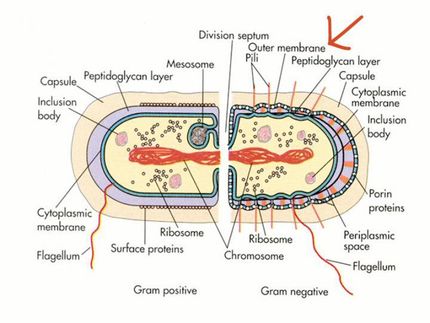Natural antibiotic’s multi-level attack strategy helps prevent resistance
Why natural antibacterial agents are superior to manmade antibiotics
The natural antibiotic Lugdunin, discovered three years ago by Tübingen researchers, attacks pathogenic bacteria in several different ways simultaneously. It also interacts with the defense mechanisms of the human body, according to a recent study published in Nature Communications. The study is the work of a research team led by Professor Birgit Schittek from the Department of Dermatology at the Tübingen University Hospital and Professor Andreas Peschel from the Interfaculty Institute of Microbiology and Infection Medicine at the University of Tübingen, and of the German Center for Infection Research (DZIF). The researchers believe that Lugdunin has remained effective over a long period of time because its manifold ability to attack stopped resistance to the antibiotic from developing.
The development of antibiotics is one of medicine’s great success stories; they save the lives of millions of people every year and have made a key contribution to the enormous increase in life expectancy. However, many experts fear that we could soon enter an era without antibiotics, because more and more of the available drugs are losing their effect due to resistance. Yet antibiotics were not invented by the pharmaceutical industry. “Indeed, numerous bacteria produce these active agents naturally, and have probably done so over long periods of evolution, without loss of effectiveness," says Birgit Schittek. Benign bacteria on the human nasal mucosa produce Lugdunin to deter the Staphylococcus aureus pathogen. "Why Lugdunin remains highly effective to the present day was a complete mystery," she says.
Unexpected properties
Only recently, chemists at the University of Tübingen reported in the journal Angewandte Chemie that Lugdunin can disrupt the energy balance of pathogenic bacteria and kill them. In their current study, the researchers discovered that Lugdunin not only has a direct antimicrobial effect on S. aureus, but also has two completely unexpected properties: “Firstly, it works in combination with antimicrobial peptides that make up our human cells," says Andreas Peschel. This increases its efficacy and hinders the development of resistance. "Secondly, it binds with a human receptor protein called TLR2," he says. "This stimulates the immune cells and activates the immune response in such a way that S. aureus has no chance of becoming established and causing infections. Schittek and Peschel point out that a natural antibiotic such as Lugdunin – which attacks on several levels, more or less independent of one another – is better at preventing resistance than a chemically produced substance that has only a single target in the bacterial cell.
Their findings can help researchers to develop new drugs that work with similar effectiveness and which lead to hardly any resistance. The findings were obtained through collaboration within the Transregional Collaborative Research Center "The skin as sensor and effector orchestrating local and systemic immunity" (SFB/TRR 156). Within the framework of the Tübingen Cluster of Excellence "Control of Microorganisms to Combat Infection,” which was launched at the start of the year, they are shedding light on the natural defense mechanisms of the microbiome – the entirety of the microorganisms that colonize humans. The German Center for Infection Research (DZIF) is further developing Lugdunin, which has been patented by the University, so that it can be used for treatments in the future.
Original publication
Katharina Bitschar, Jule Focken, Hanna Dehmer, Sonja Moos, Martin Konnerth, Nadine Schilling, Stephanie Grond, Hubert Kalbacher, Florian C. Kurschus, Friedrich Götz, Bernhard Krismer, Andreas Peschel and Birgit Schittek; "Lugdunin amplifies innate immune responses in the skin in synergy with host- and microbiota-derived factors"; Nature Communications; 2019



















































